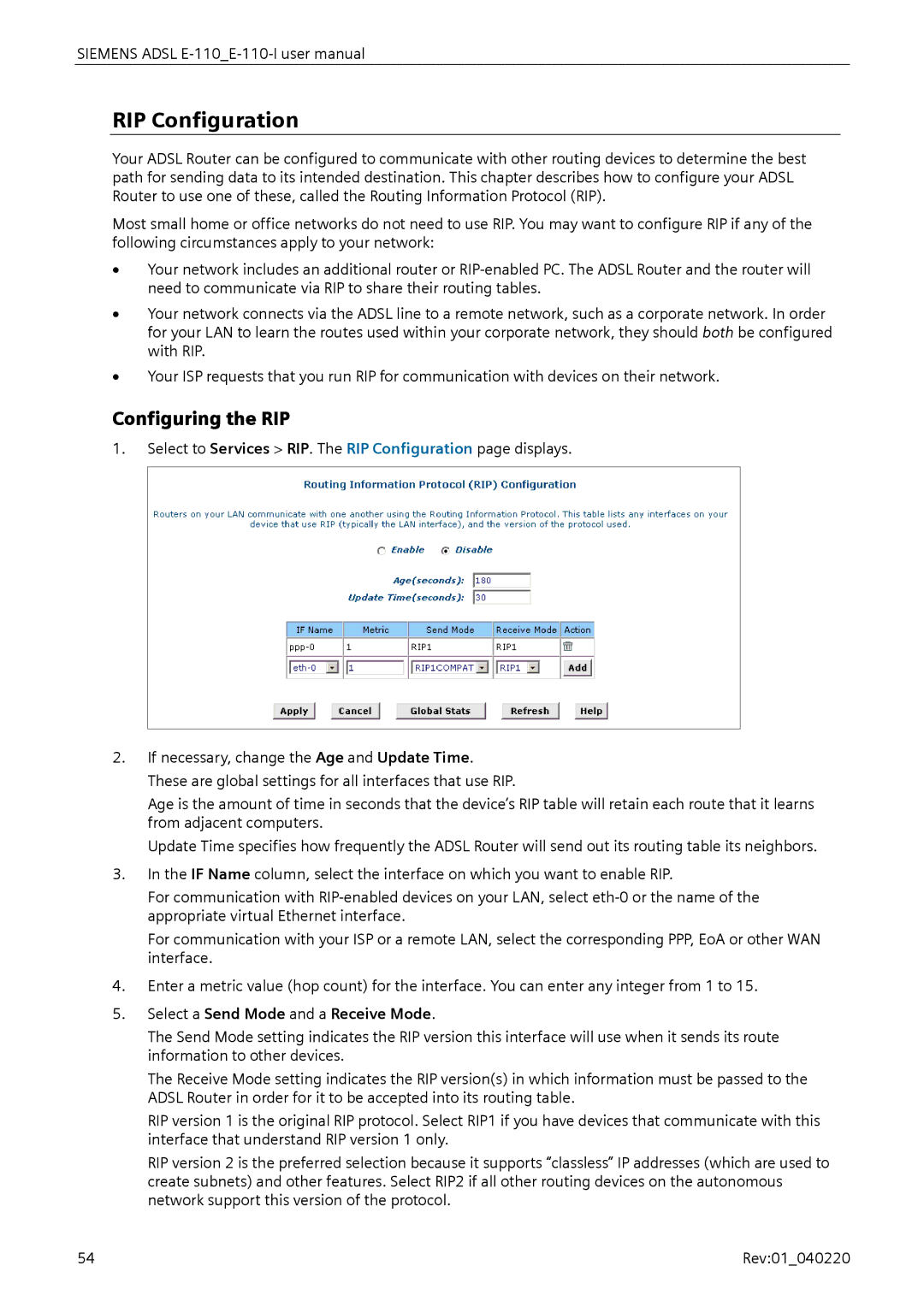
SIEMENS ADSL
RIP Configuration
Your ADSL Router can be configured to communicate with other routing devices to determine the best path for sending data to its intended destination. This chapter describes how to configure your ADSL Router to use one of these, called the Routing Information Protocol (RIP).
Most small home or office networks do not need to use RIP. You may want to configure RIP if any of the following circumstances apply to your network:
•Your network includes an additional router or
•Your network connects via the ADSL line to a remote network, such as a corporate network. In order for your LAN to learn the routes used within your corporate network, they should both be configured with RIP.
•Your ISP requests that you run RIP for communication with devices on their network.
Configuring the RIP
1.Select to Services > RIP. The RIP Configuration page displays.
2.If necessary, change the Age and Update Time. These are global settings for all interfaces that use RIP.
Age is the amount of time in seconds that the device’s RIP table will retain each route that it learns from adjacent computers.
Update Time specifies how frequently the ADSL Router will send out its routing table its neighbors.
3.In the IF Name column, select the interface on which you want to enable RIP.
For communication with
For communication with your ISP or a remote LAN, select the corresponding PPP, EoA or other WAN interface.
4.Enter a metric value (hop count) for the interface. You can enter any integer from 1 to 15.
5.Select a Send Mode and a Receive Mode.
The Send Mode setting indicates the RIP version this interface will use when it sends its route information to other devices.
The Receive Mode setting indicates the RIP version(s) in which information must be passed to the ADSL Router in order for it to be accepted into its routing table.
RIP version 1 is the original RIP protocol. Select RIP1 if you have devices that communicate with this interface that understand RIP version 1 only.
RIP version 2 is the preferred selection because it supports “classless” IP addresses (which are used to create subnets) and other features. Select RIP2 if all other routing devices on the autonomous network support this version of the protocol.
54 | Rev:01_040220 |
